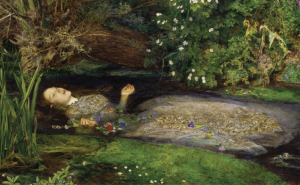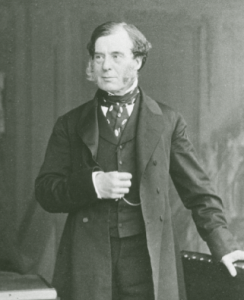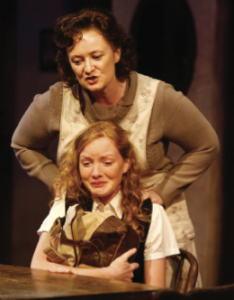Deadly sensationalism
Published in 18th–19th - Century History, Features, Issue 5 (September/October 2013), Volume 21
Above: Shakespeare’s description in Hamlet of sad Ophelia drowning amidst garlands of flowers inspired John Everett Millais’s 1852 painting. (Tate Gallery, London)
Eleanor Fitzsimons examines female suicide by drowning in the Victorian era.
The words of medical doctor and coroner William Wynn Westcott, articulated in 1885, still hold true today:
‘In every age of the world, and in the history of every country, we find instances more or less numerous of men and women who, preferring the dim uncertainty of the future to the painful realities of the present, have sought relief from all their troubles by suddenly terminating their own existence.’
Although we fall far short of adequately tackling that scourge of despair that persuades vulnerable people to doubt their worth to the extent that they choose to end their lives, we can take consolation from the fact that in our time we have developed a more sympathetic approach to mental illness than was demonstrated by our predecessors. Our contemporary attitude to the tragedy of suicide is characterised by compassion, and it seems barely credible that such an anguished flight from torment was decriminalised in Ireland as recently as 1993.
Once a grave felony

English physician George Man Burrows, author of Commentaries on the causes, forms, symptoms, and treatment, moral and medical, of insanity (1828), accused the ‘cheap press’ of directly contributing to an increase in suicides.
For many centuries we in Ireland were subject to English common law, and our legal system retains to this day strong echoes of a code that once deemed ‘self-murder’ a grave felony. In England the act of suicide was declared illegal as early as the thirteenth century, and although the ‘perpetrator’ had moved beyond the reach of the law, any property destined for their family could be seized by the state right up until the passing of the Forfeiture Act of 1870.
A felo de se (‘felon of himself’) was considered to have committed a shameful crime, an affront to God and to the crown. As a result, both the deceased and the family left behind were denied the posthumous consolation of a decent Christian burial. Until 1823 it was customary to bury suicides at the crossroads closest to the site of their ‘crime’; as an extra precaution, the body might be interred in quicklime with a stake driven through the heart to prevent the restless spirit from rising.
The only recognised defence against felo de se was acceptable proof of insanity, a state of mind that was difficult to establish. This was not an attractive prospect for a respectable family unwilling to accept the taint of mental illness, a poorly understood affliction that would damage the marriage prospects of generations to come. As censorious court officials took no account of the anguish that must have hijacked the thoughts of those driven to end their lives, a family’s best hope was to conceal the details of their loved one’s death; a sympathetic coroner might be prevailed upon to suppress evidence of suicide and opt for misadventure instead.
Suicide of Harriet ‘Smith’

Above: The ruins of Grangegorman female penitentiary today—established in 1836 as the first prison for female inmates anywhere in the British Isles, many unsuccessful female suicides ended up there.
This was the case during the inquest into the death of Harriet Westbrook of Chapel Street, London, when her family persuaded John Henry Gell Esq., coroner for the City of Westminster, to declare that she had been ‘found dead in the Serpentine River’, with no explanation as to how, or indeed why. As the details of Harriet’s tragic death were largely kept from the newspapers, the public learned little more than what was published in a short but intriguing report carried on page two of the London Times on Thursday 12 December 1816:
‘On Tuesday a respectable female, far advanced in pregnancy, was taken out of the Serpentine River and brought to her residence in Queen Street, Brompton, having been missed for nearly six weeks. She had a valuable ring on her finger. A want of honour in her own conduct is supposed to have led to this fatal catastrophe, her husband being abroad.’
Few realised that the young woman, who was buried as ‘Harriet Smith’, was in fact Harriet Shelley, 21-year-old wife of poet Percy Bysshe Shelley and mother to their two children. She had been estranged from her husband for more than two years at the time of her death, but not by her choice, and the child she carried was not his.
Isabella Thackeray

Literary drowning was not confined to the Victorian era; John B. Keane set Sive in 1950s Ireland and took as his theme the vulnerability of an illegitimate young woman (played here by Wrenn Schmidt in a November 2007 production by the Irish Repertory Theatre, New York) who drowns herself rather than enter into a forced marriage with an elderly farmer.
Harriet Shelley was not the only literary wife to succumb to deathly despair. For much of her married life, poor, troubled Isabella Thackeray remained hidden from curious eyes, a situation that caused great embarrassment to Charlotte Brontë, who was unaware of this when she dedicated Jane Eyre to William Makepeace Thackeray. In letters to his mother, Thackeray describes the repeated attempts that Isabella made to end her life. On one occasion, while travelling to Ireland by steamship,
‘The poor thing flung herself into the water (from the water-closet) and was twenty minutes floating in the sea, before the ship’s boat even saw her. O my God what a dream it is! I hardly believe it now as I write. She was found floating on her back, paddling with her hands, and had never sunk at all.’
To thwart further attempts, Thackeray tied ‘a riband round her waist, and to my waist, and this always woke me if she moved’. Had the lurid details of Isabella’s distress or Harriet’s lonely death been widely known, there were many who would have revelled in their tragedy.
‘Cheap press’ sensationalism
Although then, as now, many more men than women took their own lives, female suicide by drowning was a phenomenon that preoccupied the chattering classes throughout the nineteenth century. Such tragedies were sensationally reported on by the popular press and read voraciously by thousands. In fact, so pervasive was this unhealthy obsession that English physician George Man Burrows, a man who dedicated much of his career to the understanding and treatment of insanity, grew increasingly exasperated and accused the ‘cheap press’ of directly contributing to an increase in suicides. In a lengthy treatise, Commentaries on the causes, forms, symptoms, and treatment, moral and medical, of insanity (1828), Borrows observed that
‘Nothing is found so attractive as tales of wonder and horror, and every coroner’s inquest on an unhappy being who has destroyed himself is read with extraordinary avidity’.
Specifically linking the reporting of suicide with the act itself, he wrote:
‘No sooner is the mind disturbed by any moral causes, than the thoughts are at once directed, through these channels [newspaper reports], to meditate an act, which otherwise neither predisposition, despair, nor the nature of their insanity would have suggested’.
Certainly by the mid-nineteenth century there was an appetite to develop an understanding of the effect that becoming obsessed with the details of a suicide might have on vulnerable people. An article entitled ‘Suicide: its motives and mysteries’, published in the Irish Quarterly Review of 1857, outlined how the ‘excited curiosity’ that resulted from exposure to the details of a well-publicised suicide might prompt people to visit the sites of these deaths. Once there, the danger was that ‘empathetic imagination’ would lead these voyeurs to attempt to understand the ‘motives and sensations’ of the victim, and in extreme cases ‘visionary power’ might cause someone preoccupied with a case to emulate the actions of the earlier victim.
Depictions in popular art
Popular artists and writers of the day responded to this public appetite for the maudlin, and graphic depictions of fallen women plunging out of windows or off bridges into the murky depths below were regularly featured in popular one-shilling novels, paintings and prints. William Shakespeare may have started the trend more than two centuries earlier with his description of sad Ophelia drowning amidst garlands of flowers; certainly performances of Hamlet were hugely popular at the time, and John Everett Millais’s painting of Ophelia was publicly exhibited at the Royal Academy in 1852. Others, amongst them Thomas Hardy, Charles Dickens and the illustrator George Cruickshank, enthusiastically took up the theme.
In Hardy’s Jude the Obscure the infant Jude is abandoned by his mother when she forsakes her violent, unhappy marriage and later drowns herself. Dickens, the most popular author of the day, revisited this theme several times. In The Chimes, published in 1844 as one of a series of instructive Christmas stories, he recounts the tale of Meg, an impoverished young widow driven to contemplate drowning both herself and her child but saved by the timely chiming of church bells. Dickens based Meg’s story on the real-life case of Mary Furley, who, in a desperate bid to avoid the workhouse, jumped off a bridge holding her infant child. Mary was rescued but her baby died, and she was convicted of infanticide in April 1844.
The lure of a watery death seemed irresistible to fictionalised ‘fallen women’. In Oliver Twist Dickens has Nancy point to the Thames as it flows under London Bridge and say:
‘Look at that dark water. How many times do you read of such as I who spring into the tide, and leave no living thing to care for or bewail them? It may be years hence or it may be only months, but I shall come to that at last.’
J.B. Keane’s Sive
Such literary drowning was not confined to the Victorian era. John B. Keane set Sive in 1950s Ireland and took as his theme the vulnerability of an illegitimate young woman who drowns herself rather than enter into a forced marriage with an elderly farmer. Had Sive survived she would have received scant sympathy. Attempting suicide was a crime punishable by imprisonment, and young Irish women were often fished out of rivers and lakes only to be incarcerated as a result. Many ended up in Grangegorman female penitentiary, established in 1836 as the first prison for female inmates anywhere in the British Isles. In August 1841, 25-year-old Catherine Booth, who worked as a servant in Ship Street, Dublin, received a sentence of 30 days in Grangegorman for attempting to drown herself. One month later, fellow Dubliner 27-year-old Hannah Walsh from Britain Street was sentenced to fourteen days for the same ‘crime’. In October 1841, seventeen-year-old Mary Walsh from Anglesea Street received identical treatment. Both she and Hannah Walsh were unemployed and destitute at the time.
Among the most tragic cases was that of Mary O’Flaherty, a 34-year-old married woman who had lost five children in infancy; all died of natural causes. In 1892, when her sixth infant fell ill, the distraught woman attempted to drown herself and her baby. The baby died, but O’Flaherty survived and was acquitted of manslaughter on the grounds of insanity. Diagnosed as ‘melancholic’, she was admitted to the Central Mental Hospital, Dundrum, where she remained for the rest of her life.
Those most vulnerable to despair included the many thousands of Irish prostitutes, who endured lives of unimaginable misery. In no case was any attempt made by the authorities to improve the lives of these desperate women. Instead, they were simply rounded up, incarcerated in awful conditions and sent back onto the streets with even less chance of survival. For many this marked the start of a steady decline. Nowadays, although resources are stretched or sometimes simply not available, our approach is surely more enlightened and the notion of jailing someone in this way is unconscionable. We have some way to go yet but can take consolation in the fact that the Victorian romanticising of women driven by despair to drown or attempt to drown themselves coupled with the harsh, judgemental treatment meted out to them is no longer a feature of modern life. HI
Eleanor Fitzsimons is a researcher, writer, journalist and occasional broadcaster and is currently working on biographies of Harriet Shelly and Oscar Wilde.
Read More : Dickens’s ‘fallen women’
A suicide epidemic
Further reading
R. Broad, Water and the fallen woman in Victorian literature and art (London, 2010). [Available from www.academia.edu.]
J. Hartley, Charles Dickens and the House of Fallen Women (York, 2009).
M. Luddy, Prostitution and Irish society: 1800–1940 (Cambridge, 2008).
G.N. Ray (ed.), Letters and private papers of William Makepeace Thackeray, 1817–1840 (4 vols, Harvard, 1945).
















